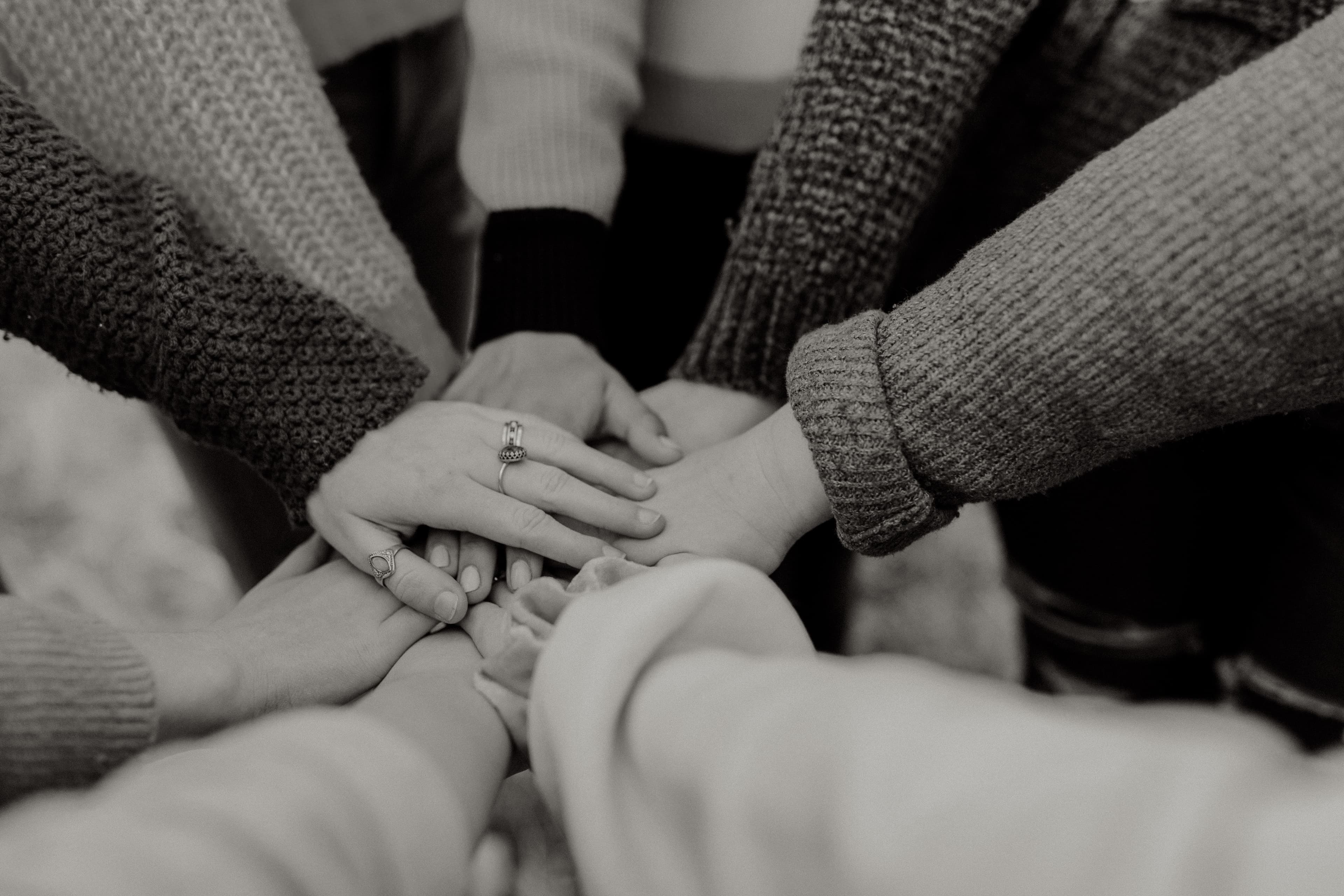
Discovering Your True Self: A Journey Within
We are thrown into this world without any idea of who we are or what is happening around us. The journey of self-discovery begins in that very helplessness.
We are thrown into this world without any idea of who we are or what is happening around us.
The journey of self-discovery begins in that very helplessness. As babies, we are fed, bathed, and helped to sleep, but without any idea of what’s happening. We do not know when we’re hungry, we just have an uncomfortable sensation. The mother interprets the discomfort and provides what might be needed for the baby. Over time and through life experiences, we then develop a sense of self, something that feels like "me." This self, however, is anything but a stable unity. It shifts, contradicts itself, and holds things we do not fully understand.
Sometimes, we wonder why we feel the way we do or react as we do. Why is it so hard to sit with ourselves and hear the loud noise of loneliness?At times, we find it difficult to be with our own minds and selves. An overflow of questions, or questioning that does not seem to have clear answers. What if the version of ourselves that we believe in is only a fragment of the whole picture? What if the rest of us—the parts we have left behind, repressed, or ignored—are influencing us in ways we do not consciously perceive?
As we grow, our mind becomes filled with thoughts, desires, and memories, but it doesn’t always feel like an ally. It can become overwhelming and alienating. How is it that our own self can feel so unfamiliar? Perhaps the self we think we are is just one version, shaped by hidden forces within us. There is an ongoing tension in the existential struggle between the identities we construct to fit in and the never-ending longing for our authentic self to be realised. This tension—between what we present to the world and who we feel on the inside— is deeply intertwined with internal conflicts, reflecting the unresolved struggles within us. It is in this conflict that psychoanalysis offers a space for exploration, helping us understand the hidden forces shaping our identities and emotional responses. These conflicts often include unresolved emotions—feelings of loss being one of the most powerful. Loss, whether acknowledged or not, leaves an imprint that quietly influences our lives in ways we’re not always aware of. This is where therapy techniques can help us begin the process of discovering our true selves.
The Past in the Present: Why Discovering Your True Self Is So Difficult?
Psychoanalysis suggests that much of our mind operates outside our awareness. Freud described the unconscious as a repository of thoughts, feelings, and desires that we cannot access directly but that shape our perceptions, choices, and emotional responses. It is not a simple distinction between conscious and non-conscious life; psychoanalysis contends that substantial therapeutic progress lies in understanding the underlying dynamics governing what emerges into consciousness. And what is hidden is not random; it holds meaning for the individual. This is why psychoanalytic therapy practice is not about quick solutions or learning coping mechanisms. It is not merely about uncovering hidden truths—it’s about understanding the layers beneath our conscious awareness, the unsaid in what is said, and the deeper meanings of what it means to be 'me' in relation to others and ourselves. This process takes place within the therapeutic space, where unconscious material can be explored and understood.
When we relate to others, we unconsciously re-enact patterns from past relationships. We associate different figures we came close to as we grow up with the outside world—the father figure, the mother, the sister, the difference of age, the cultural dynamics, the differentiation between what is not me in relation to myself. These recurring dynamics, shaped by earlier experiences, inform how we relate to others, even without us fully realising it. Meeting a new person or stranger is always challenging; we don’t want our expectations to be too far off or too unfamiliar.
We have an internal world of accumulated unprocessed experiences, deeply embedded patterns and internal templates, and stories passed down generationally. We may believe we are in control of our actions, yet much of what we do is dictated by unconscious forces. We repeat past behaviours, recreate familiar dynamics, and defend ourselves against discomfort without really questioning or knowing why. We are continually confronted with the challenge of recreating life’s meaning in the absence of certainty. This existential void is where we face the tension between the identities we construct to fit in and the authentic self we long to realise, but which constantly feels missing or out of reach. In this struggle, psychoanalytic therapy offers a space to explore and understand the unconscious material that shapes our perceptions, helping us cope with the absence of certainty and create meaning from unresolved emotional experiences. Unresolved experiences and unconscious forces often manifest as loss—not just the loss of people or things, but of aspects of ourselves that we’ve never truly mourned or fully recognised. These hidden losses shape how we navigate life, often without us even realising their impact.
Understanding The Loss of Something We Never Had Through Therapy Practice
Loss is often thought of in terms of grief over death or separation, but we experience many losses throughout our lives: the loss of who we once were, relationships that no longer serve us, and beliefs we've outgrown. It is a defining feature of life, present from the very beginning—starting with our separation from the safety of the womb. It continues with the slow, painful loss of childhood innocence and dependence, and the gradual dissolution of certainty at every stage of life. Yet, loss doesn’t always have clear resolution. Even parts of ourselves we abandoned without realising remain, unresolved and quietly influencing us.
We adapt, change, and move forward, but we rarely stop to grieve and mourn what we've left behind. Because these losses are unacknowledged, they don't simply disappear; they remain within us, accompanying us into adulthood, and manifesting in our behaviours and relationships. Social alienation is not just a disconnection from others—it can also reflect unresolved inner conflicts or parts of ourselves we've repressed and disconnected from. Perhaps we never even knew about them, as they are repressed or forgotten, remaining out of conscious awareness. These silent losses shape us in ways we don't always see, lingering in our unconscious and influencing our sense of self and how we navigate relationships—both with ourselves and with others. Think of a fatherless child—this is the loss of something they never had, but it also carries a deep emotional imprint of unmet needs and unprocessed grief, which may surface in later relationships.
Yet, it is a deep loss that evolves and grows and catches up later when that child is a father himself. Specialised therapy techniques can help address these complex feelings of loss.
Therapy Techniques for Exploring Secrets and the Unconscious
What happens when the story we have lived by stops making sense? When something in us begins to question what we’ve always assumed to be true? This is where the unconscious reveals itself—not as a hidden place full of secrets, but as the silent force shaping our reality. We all carry within us a secret life—a realm of thoughts and feelings not fully accessible, unknown even to ourselves. What does it mean to have something inside us that we cannot see? How does it shape the way we live, relate, and suffer?
The aim of psychoanalytic therapy is not to uncover an objective truth, but to understand the truths that subjectively shape our experiences, thoughts, and behaviours as we experience them. Much of who we are is shaped by stories, many of which we don't even consciously know we carry. These stories come from the people who raised us, from cultural expectations, from early experiences we may not even remember.
Conclusion
We walk through life believing we are whole, certain of who we are and how we came to be, but beneath the surface lies a fragmented self, stitched together by unspoken experiences, forgotten losses, and emotional echoes of the past. Psychoanalysis invites us to meet those lost parts not to "fix" them, but to understand their role in our ongoing becoming.
Maybe what you feel isn't random or irrational. Maybe it's your unconscious speaking in the only language it knows through feeling, through repetition, through your relationship with others. And maybe the self you long to find is already there, quietly waiting to be heard. Through mental health workshops and dedicated therapy practice, the journey of discovering your true self becomes not just possible but profoundly meaningful.
These aren't just ideas on a page. In her podcast with Bright Shift, Rana talks about what psychoanalysis actually looks like, sounds like, feels like in practice, give it a listen and explore these ideas further.









